By lyuesword | 20 July 2020 | 1 Comments
KISSAKI - The Tip or Point of the Blade of a Japanese Sword
The Kissaki is the tip of the Japanese blade. This is also where you will find the Boshi which is the hardened edge section of the tip and the Yokote which is the dividing line where the surfaces change between the blade and the tip. The size of the Kissaki is up to the blade maker but generally fall in Ko, Chu or O sizes which is small 3 cm, medium 4-5 cm and large 7-8cm.
Types of KISSAKI in the shinogi-zukuri style
"KO-KISSAKI"
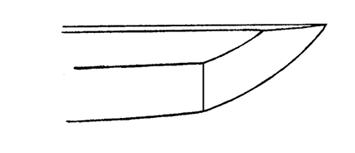
Ko-kissaki means "small kissaki" and it is a matter of size.
Most of the time, this word is used for tachi blades in 12th century. A long blade (about 80 cm) with a wide base (about 30 mm), and the width becomes narrow toward the kissaki, (about 15 mm at kissaki). In such blades, the kissaki looks very small comparing to the base. It is especially called "ko-kissaki".
Such long blades have to have big fumbari and an emphatic koshi-sori.
"CHU-KISSAKI"
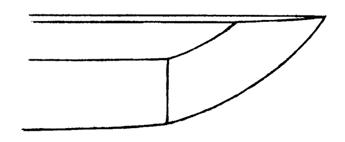
It is the meaning of shape. "chu" means "middle".
The width and the length of the kissaki are in good proportion. The length looks a little bigger than the width.
It is common on katana blades.
"O-KISSAKI"
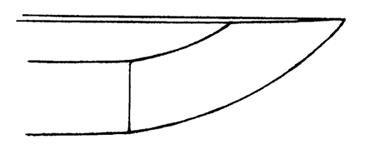
It is a long kissaki. "O" means "large".
The kissaki length is far larger than the width. It looks emphatic for eyes.
This type started in 14th century. It appears on large blades, over 90 cm long. The blade width also is large towards the kissaki and it is proportional to the length. But the thickness doesn't become so large.
"IKUBI-KISSAKI"
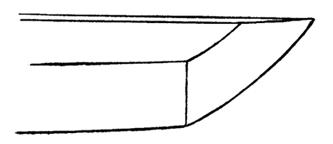
It is a short kissaki. The kissaki width and the length are almost same. It looks robust and steady.
It is a typical shape of tachi blades in 13th century.It appears on broad and thick blades in that period.
"KAMASU-KISSAKI"
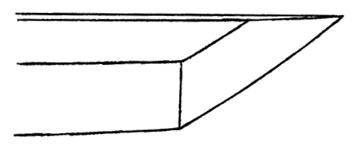
The line from the start of the kissaki to the top of it is almost straight.
Such a kissaki is especially called "kamasu-" even if the kissaki is long or short. It looks very sharp.
This type has a little different meaning than other types. Because, this type is an original shape of the kissaki before 14th century. But it is very rare to be found today.
The tip is very sharp and delicate, so it is easy to be broken in a fight. The kissaki line easily becomes round by re-polishing after use. We can see kamasu type only on healthy blades in some old temples or shrines as their treasure. They were put in there before use to celebrate Buddha or god.
Want a unique sword? Feel free to contact us:
Email: lyuesword@hotmail.com
Website: www.lyuesword.com
Custom Sword Page: www.lyuesword.com/Custom-Sword/customization-options/Create-Your-Own-Swords
Types of KISSAKI in the shinogi-zukuri style
"KO-KISSAKI"

Ko-kissaki means "small kissaki" and it is a matter of size.
Most of the time, this word is used for tachi blades in 12th century. A long blade (about 80 cm) with a wide base (about 30 mm), and the width becomes narrow toward the kissaki, (about 15 mm at kissaki). In such blades, the kissaki looks very small comparing to the base. It is especially called "ko-kissaki".
Such long blades have to have big fumbari and an emphatic koshi-sori.
"CHU-KISSAKI"

It is the meaning of shape. "chu" means "middle".
The width and the length of the kissaki are in good proportion. The length looks a little bigger than the width.
It is common on katana blades.
"O-KISSAKI"

It is a long kissaki. "O" means "large".
The kissaki length is far larger than the width. It looks emphatic for eyes.
This type started in 14th century. It appears on large blades, over 90 cm long. The blade width also is large towards the kissaki and it is proportional to the length. But the thickness doesn't become so large.
"IKUBI-KISSAKI"

It is a short kissaki. The kissaki width and the length are almost same. It looks robust and steady.
It is a typical shape of tachi blades in 13th century.It appears on broad and thick blades in that period.
"KAMASU-KISSAKI"

The line from the start of the kissaki to the top of it is almost straight.
Such a kissaki is especially called "kamasu-" even if the kissaki is long or short. It looks very sharp.
This type has a little different meaning than other types. Because, this type is an original shape of the kissaki before 14th century. But it is very rare to be found today.
The tip is very sharp and delicate, so it is easy to be broken in a fight. The kissaki line easily becomes round by re-polishing after use. We can see kamasu type only on healthy blades in some old temples or shrines as their treasure. They were put in there before use to celebrate Buddha or god.
Want a unique sword? Feel free to contact us:
Email: lyuesword@hotmail.com
Website: www.lyuesword.com
Custom Sword Page: www.lyuesword.com/Custom-Sword/customization-options/Create-Your-Own-Swords
Recently Reviews
Read MoreLeave a Reply
Your email address will not be published.Required fields are marked. *
TAGS